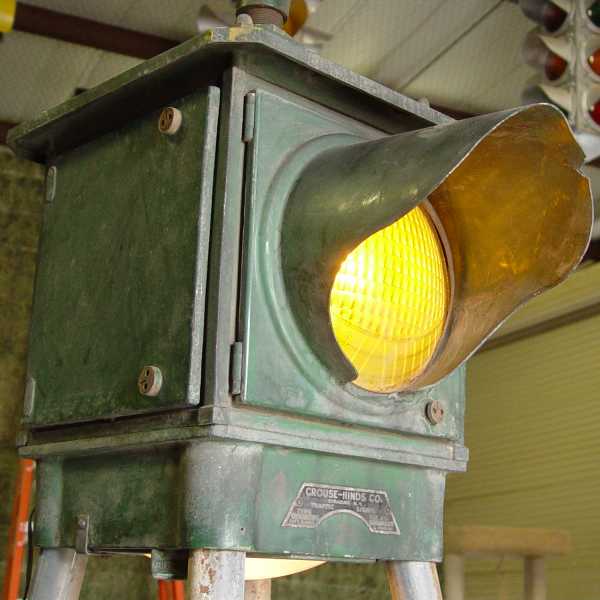
Willis Lamm's
Traffic Signal Collection
Crouse-Hinds D Traffic Beacon
4-Point Pedestal Mount with Down Light
Click on a photo to bring up a
full sized view in a new window.
Many early bridges, particularly those carrying heavy train traffic, had limitations as to the distance that they could span. Many bridges crossing highways had center supports. These supports often separated opposing traffic on two-way streets, and when streets became one-way, they separated lanes of traffic traveling the same direction. Warning devices were often placed in front of these supports so that traffic wouldn't change lanes and strike them.
This particular beacon, a Type TIW-221 "Special," appears to be just such a warning device. It mounted on four legs, had a single aspect, and had a down light. Power was supplied from the top by means of 3/4 inch conduit, most likely from the center support that it was place in front of. The down light likely illuminated a warning sign or bollard.
The beacon likely originally shone steady as many early beacons did. There is only one circuit supplying both the beacon lamp and down light. The two fuses protected a single circuit - one on the hot lead and one on the neutral lead. That arrangement was common in pre WW-II wiring installations.
When received, the beacon had one very well used and slightly discolored ceramic button flasher installed behind the beacon bulb that caused the bulb to flash. This flasher still works and I will keep it in the signal.
|